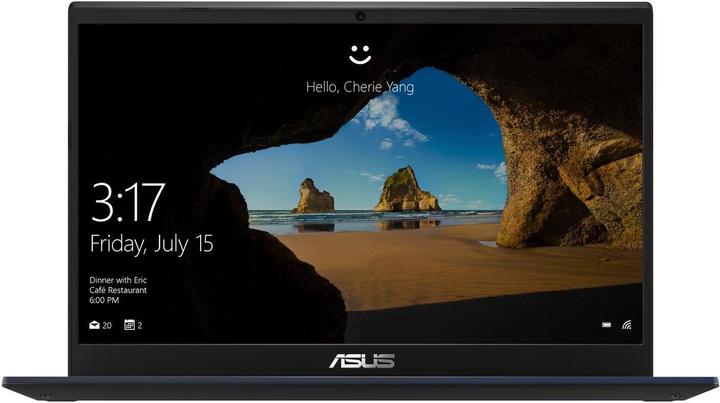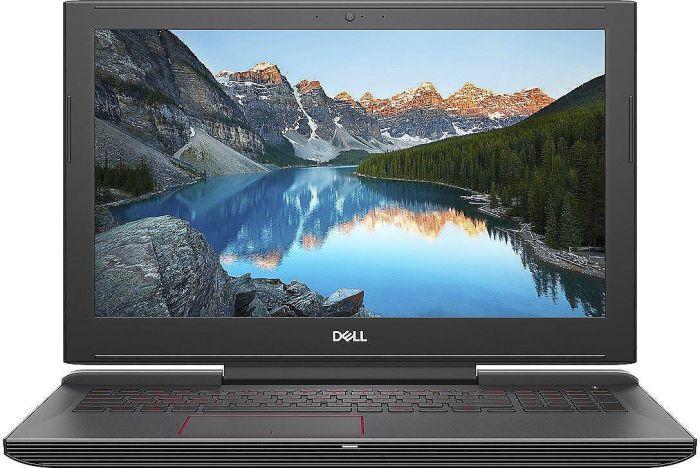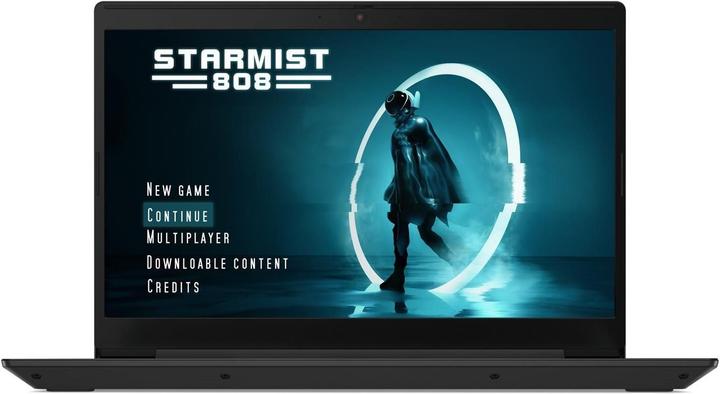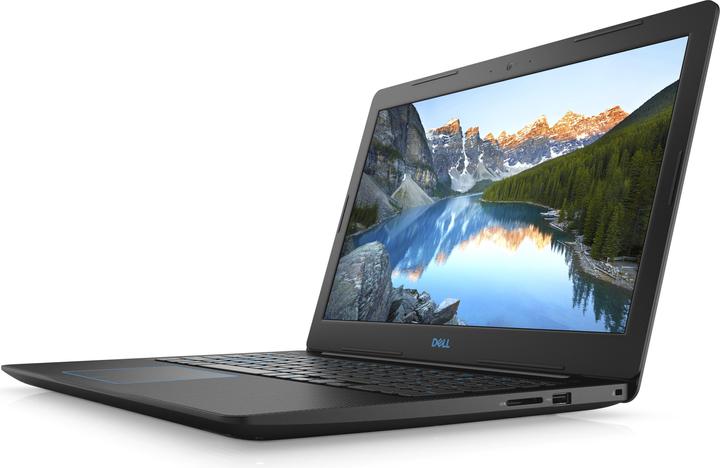

Gaming notebook for under 1,400 francs
The hardware for a notebook designed for video games is more expensive than that for a desktop PC. But that's without counting the bargains.
There are many reasons to own a notebook for video games. First of all, it saves space in the home, as there's no need for bulky boxes or other such accessories, and finally the undeniable advantage you'll have over the others at your next LAN tournament, the famous LAN party. The drawbacks? The higher cost of the hardware and the fact that it emits more noise than a conventional PC. Because of its compact design, heat has to be dissipated better, which is less obvious than with a large PC case. The result is not only noisier draughts, but also direct losses in the performance of the installed hardware.
In other words, unlike a large gaming PC, you can't always rely on the hardware and its specifications. Compared to a laptop with a barely decent ventilation design, a cooling system worthy of the name can boost the performance of a notebook with a graphics card that is nevertheless not as good. The same goes for integrated processors.
What should you look out for when buying?
Do you already have your own idea of what's important when buying a notebook for video games? Do you? Then I invite you to leave a comment in the section at the bottom of the page.
Given the hardware differences from one notebook to the next, a purchase is not a decision to be taken lightly. On the keyboard alone - that is, in terms of haptics and ergonomics - we all have different expectations. So it's a good idea to try out the device in a shop or at a friend's place, or to gather enough owners' opinions and reviews. As for me, let me make a few more prosaic recommendations.
Processor and memory (RAM)
Gaming notebooks for neophytes come with at least an i5 processor, so there's no need to waste too much time on this issue. And if it's combined with a graphics card in the low to mid-range of the top end, that's more than enough.
When it comes to memory, you won't find a laptop with less than 8GB of RAM in our shop. That's fine, but to make sure you've got your back, I'd recommend one with 16GB of RAM. Alternatively? Choose one with 8GB and buy a second RAM bar to upgrade. Or you wait and see if the 8GB is enough to run your favourite games.
Graphic card
To play games from previous years in 1080p resolution with medium to high graphics settings, you'll need at the very least a graphics card deploying the performance of an NVIDIA GeForce GTX 1050 Ti. Below that, I strongly advise against it. If you opt for an NVIDIA GeForce GTX 1650 or higher, then you'll be able to play many of today's games without a hitch at high or even maximum settings.
To help you out, I suggest you take a look at the following table, which includes the recommended entry-level graphics cards for notebook gaming. They are listed in descending order, i.e. from the best performing to the worst.
| Cartes graphiques | Segment | Fréquence d'horloge et VRAM |
|---|---|---|
| NVIDIA GeForce GTX 1660 Ti | Haut de gamme inférieur, à haute résolution, mieux que la GTX 1070 | 1455 - 1590 MHz, jusqu'à 6 Go de VRAM |
| NVIDIA GeForce GTX 1070 | Haut de gamme inférieur, jusqu'à 1080p de mieux que la GTX 1660 TI | 1443 - 1645 MHz, jusqu'à 8 Go de VRAM |
| NVIDIA GeForce GTX 1070 Max-Q | Milieu de gamme supérieur | 1101 - 1379 MHz, jusqu'à 8 Go de VRAM |
| NVIDIA GeForce GTX 1060 | Milieu de gamme, un peu mieux que la GTX 1650 | 1404 - 1670 MHz, jusqu'à 6 Go de VRAM |
| NVIDIA GeForce GTX 1650 | Milieu de gamme, à haute résolution, mieux que la GTX 1060 Max-Q | 1395 - 1560 MHz, jusqu'à 4 Go de VRAM |
| NVIDIA GeForce GTX 1060 Max-Q | Milieu de gamme, jusqu'à 1080p de mieux que la GTX 1650 | 1063 - 1480 MHz, jusqu'à 4 Go de VRAM |
| NVIDIA GeForce GTX 1650 Max-Q | Milieu de gamme, un peu mieux que la RX 560X | 1020 - 1245 MHz, jusqu'à 4 Go de VRAM |
| AMD Radeon RX 560X | Milieu de gamme, un peu mieux que la GTX 1050 Ti | 1172 - 1275 MHz, jusqu'à 4 Go de VRAM |
| NVIDIA GeForce GTX 1050 Ti | Milieu de gamme | 1493 - 1620 MHz, jusqu'à 4 Go de VRAM |
Storage
For your system to run smoothly, the computer must have an SSD on board. However, you'll need a lot of space for your games and SSD storage isn't cheap. So your gaming notebook should ideally come with a small SSD for Windows and an extra hard drive for gaming. If you opt for a computer that only has a single SSD, you'll need at least 512GB of RAM.
Display
The resolution of entry-level gaming notebooks never exceeds 1080p. In return, you'll be able to choose the screen diagonal. Specifically? 15.6 or 17.3 inches? Whichever you choose, you should be aware that the range of 17.3-inch gaming laptops is limited because of the extra cost. So there are just three in my recommendations below.
With notebooks under 1,400 francs, you'll have to forgo technologies such as G-Sync or even HDR. But there are still some devices with 120 or 144 Hz screens. Increasing the output frequency will spare your eyes and prolong your gaming pleasure.
In other words, it's best if the screen brightness isn't too low. You should aim for 300 cd/m² or more, but it's not compulsory if you're playing in the dark. However, it's not always easy to find out how many cd/m² the panel has. Search the internet by computer type and keywords "brightness", "cd/m²" or even "nits".
Connectivity
Before you buy, think about the peripherals you want to connect to your computer. Check whether the future device has everything you need on that front. If, for example, you want to connect an external screen, but the laptop only has a USB-C port, it's advisable to buy an adapter for it straight away.
Keyboard
When it comes to gaming, the keyboard plays an important role. But as many preferences, so many keyboards, if I may say so. To find out more about haptics, ask the people you asked for advice. Try to find out more about key travel and general layout. The lighting and the material of the palm rest should also be taken into account. Ideally, test everything out in the shop or on a friend's computer.
Battery performance
No notebook designed for video games lasts more than two hours without a mains connection. As a result, the choice of battery is anecdotal.
Gaming notebook recommendations for under 1400 francs
Following are my recommendations. In doing so, I've taken care to list only those models that we've found to be good in our own reviews or that perform well in a cross-comparison of different internet reviews.
15.6-inch gaming notebook for beginners with great potential
You can't get this much graphics power for under 1,400 francs. This laptop packs an NVIDIA GeForce GTX 1660 Ti, 16GB of RAM and an AMD Ryzen 7, plus the screen offers a high refresh rate. Unfortunately, this is the only computer with GTX 1660 Ti under 1400 francs and available at the time of publication of this article.

ASUS TUF Gaming FX505DU-AL137T: 15.6-inch screen with 120 Hz, AMD Ryzen 7 3750H, nVidia GeForce GTX 1660 Ti, 16GB RAM, 512GB SSD
15.6-inch gaming notebook to start with good potential
With an nVidia GeForce GTX 1650 or GTX 1060 Max-Q bekommst du ordentliche Einstiegs-Power. **Please ensure that the models listed with 8GB of RAM are only worthwhile if you upgrade with additional RAM. Otherwise, go straight to a model with 16 GB RAM. Or you try to see if 8GB is enough for you.
ASUS GamingBook X571GT-AL101T: 15.6-inch screen with 120Hz, Intel Core i7-9750H, nVidia GeForce GTX 1650, 16GB RAM, 512GB SSD, 1TB HDD
Dell G5 15 5587: 15.6-inch display, Intel Core i5-8300H, nVidia GeForce GTX 1060 Max-Q, 8GB RAM (2nd card slot free), 128GB SSD, 1TB HDD
Lenovo Ideapad L340: 15.6-inch display, Intel Core i7-9750H, nVidia GeForce GTX 1650, 16GB RAM, 256GB SSD, 1TB HDD
Lenovo Legion Y540: 15.6-inch display with 144Hz, Intel Core i7-9750H, nVidia GeForce GTX 1650, 16GB RAM, 256GB SSD, 1TB HDD
ASUS X571GT-AL115T: 15.6-inch screen with 120 Hz, Intel Core i5-9300H, nVidia GeForce GTX 1650, 8 GB RAM (2nd card slot free), 512 GB SSD
15.6-inch gaming notebook for beginners with medium potential
These days, a gaming notebook with a less powerful graphics card is not an option. The laptops I'm offering you are equipped with an nVidia GeForce GTX 1050 Ti. We recommend upgrading the 8GB RAM model with an additional 8GB.
Medion Erazer P6705: 15.6-inch screen, Intel Core i7-8750H, nVidia GeForce GTX 1050 Ti, 16GB RAM, 256GB SSD, 1TB HDD.
Dell G3 15 3579: 15.6 screen, Intel Core i7-8750H, nVidia GeForce GTX 1050 Ti, 8GB RAM (2nd card slot free), 128GB SSD, 1TB HDD.
17.3-inch gaming notebook
More screen diagonal? It's possible, but for a fee. That's why I'm recommending here three notebooks for under 1,400 francs apiece. They are sorted in descending order according to their performance. On the last model, the least powerful, note that it only packs 8GB of RAM. Fortunately, it has a second slot for an upgrade bar.
HP Omen 17-AN165NG: 17.3-inch display, Intel Core i7-8750H, nVidia GeForce GTX 1060, 16GB RAM, 256GB SSD, 1TB HDD.
Lenovo L340 Gaming: 17.3-inch display, Intel Core i7-9750H, nVidia GeForce GTX 1650, 16GB RAM, 256GB SSD, 1TB HDD.
HP Omen 17-AN162NG: 17.3-inch display, Intel Core i7-8750H, nVidia GeForce GTX 1050 Ti, 8GB RAM (2nd card slot free), 128GB SSD, 1TB HDD.
If you like, you can share your recommendations and tips for other gaming notebooks in the comments column below.
I find my muse in everything. When I don’t, I draw inspiration from daydreaming. After all, if you dream, you don’t sleep through life.
Practical solutions for everyday problems with technology, household hacks and much more.
Show all










